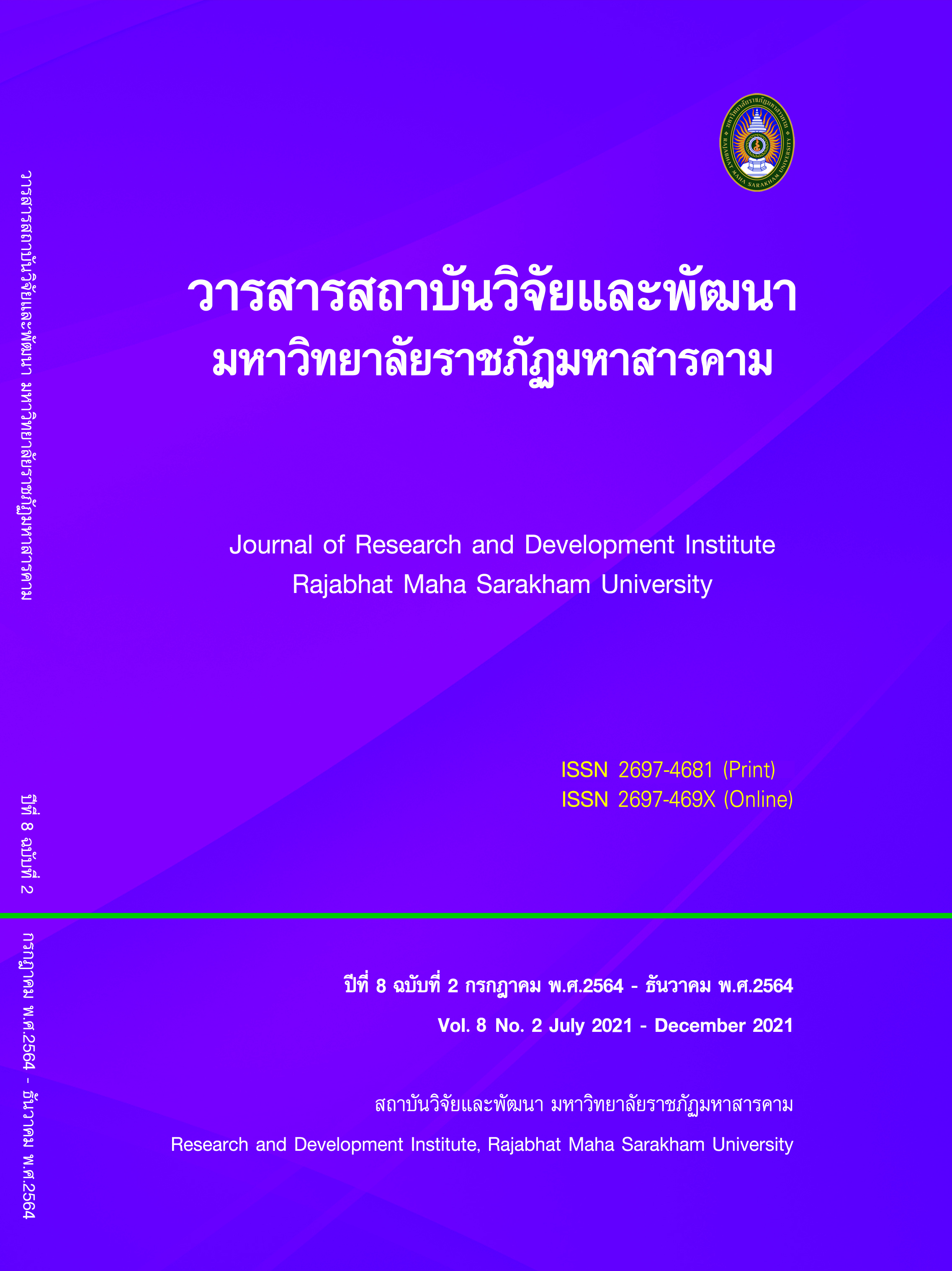The Office of Basic Education Commission: OBEC 3 Stars , Supervisory Zone 5th
Keywords:
A Study of The Guideline, Moral School, The Office of Basic Education Commission: OBEC 3 Stars, Supervisory Zone Supervisory Zone 5thAbstract
A Study of The Guideline for Moral School,The Office of Basic Education Commission: OBEC 3 Stars, Supervisory Zone 5th. The objectives of this research were : 1) to study the opinions of the students towards A Study of The Guideline for Moral School, The Office of Basic Education Commission: OBEC 3 Stars , Supervisory Zone 5th. 2) to study the opinions of the teachers towards A Study of The Guideline for Moral School, The Office of Basic Education Commission: OBEC 3 Stars , Supervisory Zone 5th. 3) to study the opinions of the school administrators towards, A Study of The Guideline for Moral School, The Office of Basic Education Commission: OBEC 3 Stars, Supervisory Zone 5th. 4) to study The Guideline for Moral School, The Office of Basic Education Commission:OBEC3 Stars, Supervisory Zone 5th. Target groups are students, teachers, and school administrators in Moral School, The Office of Basic Education Commission: OBEC 3 Stars , Supervisory Zone 5th. 2019. There are 12 schools passed supervision, monitoring and evaluation in the first round of assessment. The tools used in the experiment consisted of interview questionnaire using percentage statistics , standard deviation mean and content analysis.
The research findings found that :- The students’ opinions about driving model in the moral school. The Office of Basic Education Commission: OBEC 3 Stars , Supervisory Zone 5th. It’s in “highest” level. The Guideline for Moral School, passed the assessment is at level 3. It’s 100 %. There is an internal guideline supervision consists of supervision. Formally by visiting the class and observing instruction, supervision, monitoring the class. Informally by the supervisory school director himself supervision model. Guideline for Moral School, The OBEC found that , it was 95 % role model . It cannot be 5 % role model. The Guideline for Moral School should have a development approach, train students on morals every day, integration of all subjects, development of supervisory systems for working team, to prepare a concrete supervision report.
References
Boonpirom, S. (2010). Academic administration. Bangkok: Book Point.
Boonswasdi, W. (1995). Principles of Educational Supervision. Bangkok: Art Graphic Printing.
Diskul, P. (2015). Moral school policy. [Online]. http://www.kroobannok.com/81394.
April 2019]
Jiradechakul, K. (2007). School Supervision Manual. Bangkok: Tharn Aksorn publisher co.ltd.
Kitdej, S. (2001). Relationship between supervisory performance of administrators and teaching efficiency in large primary schools in Nakhon Pathom Province. Bangkok: Silpakorn University.
Laowreandee, W. (2007). Supervision of Instruction. (5nded). Nakhon Pathom: Silpakorn University.
Ministry of Education. (2011). Guidelines for Supervision of Educational Institutions. Bangkok: Ministry of Education.
Nuengpho, P. (2010). Development of teaching and learning management that focuses on learners as a teacherin Ban Kho School with participative internal supervision process. Independent study: Khon Kaen University.
Puahengsub, S. (2003). Factors Associated with Teacher Satisfaction in Internal Supervision on Student-Centered Teaching Management in Private Catholic Schools in Surat Thani Diocese. Master of Thesis: Srinakharinwirot University.
Sangchai, K. (2009). Development of a model of supervision for teaching science teachers to develop potential of students with promising scientific talents. Master’s Thesis: Silpakorn University.
Srisaat, B. (2011). Preliminary research (9nded). Bangkok: Suree Wittayasan.
Tharasrisudti, P. (2007). Organization and administration of academic affairs. Bangkok: Ramkhamhaeng University.
Yuwasathirakun Foundation. (2015). Moral School Practice Manual. Bangkok: Sahamit Machinery Public Company Limited.
Downloads
Published
How to Cite
Issue
Section
License
Copyright (c) 2021 Journal of Research and Development Institute Rajabhat Maha Sarakham University

This work is licensed under a Creative Commons Attribution-NonCommercial-NoDerivatives 4.0 International License.
Articles that are published are copyrighted by the authors of the articles







